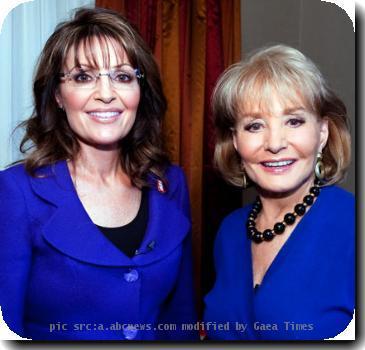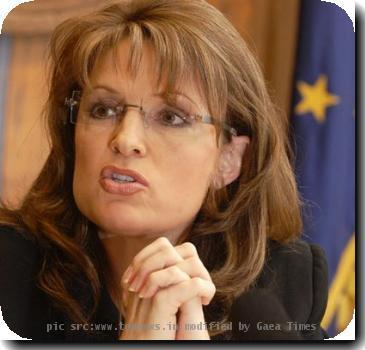On 90th anniversary of women gaining right to vote, mixed grades for progress in politics
By David Crary, APWednesday, August 25, 2010
More women in political spotlight, but gap remains
NEW YORK — The suffragists who 90 years ago won voting rights for women would likely shake their heads in wonder at this election, with its “mama grizzly” candidates and high-stakes woman-vs.-woman showdowns.
The women in key races include a rancher and three multimillionaire former CEOs, one a pro wrestling magnate. Two frontier states — Oklahoma and New Mexico — seem assured of electing their first female governor after both major parties nominated women.
Yet in spite of celebrations planned Thursday for Women’s Equality Day, marking the adoption of the 19th Amendment in 1920, American women’s share of high-level political power still lags behind scores of other nations.
Women hold only 17 percent of the seats in Congress — well below Europe’s 22 percent and far behind the Nordic countries’ 42 percent — and the major parties have yet to nominate a woman for president. Hillary Rodham Clinton’s campaign for the Democratic nomination in 2008 collected 18 million votes but still fell short of victory.
“The handful of women that you see near the top is just that — a handful,” said Erin Vilardi of the White House Project, which seeks to expand women’s role in politics.
“At the congressional level, both parties have a hell of a lot of work to do,” Vilardi said. “The culture is still very dominantly male.”
Among the notable developments in this year’s campaign is the emergence of numerous charismatic, conservative women running as Republicans.
In California, wealthy businesswomen Meg Whitman, the ex-CEO of eBay, and Carly Fiorina, ex-CEO of Hewlett-Packard, are the GOP nominees for governor and Senate.
Fiorina is the first Republican woman to take on the Democratic incumbent, Barbara Boxer, since Boxer entered the Senate in 1992, and the race has captured national attention.
In South Dakota, the race for the state’s lone House seat pits the incumbent Democrat, Stephanie Herseth-Sandlin, against Republican legislator Kristi Noem — both of them working moms who grew up on farms. Noem, who helps her husband run a ranch, is one of several GOP woman candidates dubbed “mama grizzlies” because of traits shared with Sarah Palin, the party’s 2008 vice presidential nominee and a political star who’s been doling out endorsements this year.
In Minnesota’s 6th District, the conservative Republican incumbent, outspoken Tea Party favorite Michele Bachmann, is being challenged by Democratic State Sen. Tarryl Clark in what could be one of the nation’s most expensive House races.
In New Mexico, Democrat Diane Denish, the lieutenant governor since 2003, is competing for governor against the GOP’s Susana Martinez, a Latina district attorney who has drawn attention for her tough stance on illegal immigration.
In Oklahoma, Republican U.S. Rep. Mary Fallin, who’s been endorsed by Palin, is favored in the governor’s race over Democratic Lt. Gov. Jari Askins.
According to the Center for American Women in Politics at Rutgers University, there have been only two other woman-vs.-woman gubernatorial contests in U.S. history — in Nebraska in 1986 and Hawaii in 2002.
Florida could join New Mexico and Oklahoma is electing its first woman governor — if Democratic nominee Alex Sink can win in November.
One of the most distinctive female candidates is the GOP nominee for U.S. Senate in Connecticut, Linda McMahon, former CEO of the World Wrestling Entertainment empire that she and her husband developed. McMahon, who says she’ll spend up to $50 million of her own money on the race, was nicknamed “Crotch-kicker” in a statement from the Democratic National Committee.
In Colorado, the issue of male chauvinism surfaced in the campaign for the GOP Senate nomination. Ken Buck — a prosecutor with a strong Tea Party following — prevailed despite criticism for saying he should be backed over rival Jane Norton “because I do not wear high heels.”
Worldwide, women hold 19 percent of the seats in national legislatures, according to the Inter-Parliamentary Union. Its rankings of 186 nations — based on percentage of women in the single or lower chamber of the legislature — has the U.S. tied for 90th with Turkmenistan.
Women have held the top government post in dozens of countries — including Germany, Britain, Australia, Argentina, Israel, India and Turkey.
Several Women’s Equality Day events are planned across the country Thursday.
In California, a great, great, great granddaughter of suffragist leader Elizabeth Cady Stanton will address a rally near the statehouse in Sacramento. In New York, the Susan B. Anthony List — it backs female candidates opposed to abortion — will host a forum on “pro-life feminism.”
Marjorie Dannenfelser, president of the Susan B. Anthony List, said the surge of women running as anti-abortion conservatives reflected a “war over who gets to define what feminism means.”
“There’s an unsettling of the political apple cart,” Dannenfelser said. “Sarah Palin kicked the door open, and a lot of women started going through.”
Elsewhere in New York, several women’s rights leaders and liberal members of Congress will be speaking at a ceremony renaming a U.S. post office in Queens after Geraldine Ferraro, who in 1984 became the first woman to run for vice president on a major party ticket.
Among the scheduled speakers is Terry O’Neill, president of the National Organization for Women, who said Ferraro’s poise and toughness had inspired many women to go into politics.
However, O’Neill described the percentage of women in Congress as “abysmal” and said the United States should be ashamed that it’s one of only seven U.N. members — in company with Iran and Sudan — that hasn’t ratified a 30-year-old women’s rights treaty, the Convention on the Elimination of All Forms of Discrimination Against Women.
Tags: Feminism, Middle East, New Mexico, New York, North America, Oklahoma, Political Endorsements, Sarah palin, Sports, United States, Women's Sports

